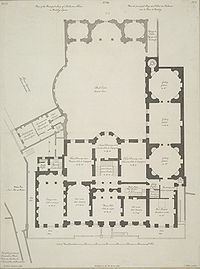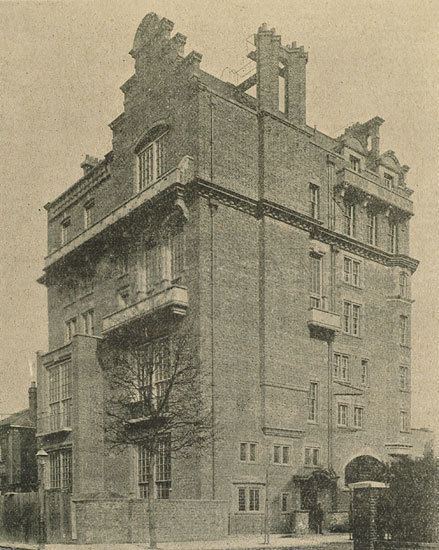Opened 1762 London borough City of Westminster | Architect Robert Adam | |
 | ||
Similar Lansdowne Club, Osterley Park, Syon House, Devonshire House, Kedleston Hall | ||
Lansdowne house video
Lansdowne House is a building to the southwest of Berkeley Square in central London, England, much of which is now demolished. It has been owned by three British Prime Ministers and some of its 18th-century interiors, among the best in London, were removed and re-erected elsewhere. The remaining part was granted Grade II* Listed Building status in 1970.
Contents
- Lansdowne house video
- Drawing room from lansdowne house london c 1766 75
- History
- Partial demolition and dispersal
- References

Drawing room from lansdowne house london c 1766 75
History

It was designed by Robert Adam as a private house for John Stuart, 3rd Earl of Bute but in 1763 he sold it unfinished to William Petty, 2nd Earl of Shelburne (both men became Prime Minister). Shelburne retained Adam until 1771, when his wife died, with parts of the decoration still incomplete. George Dance the Younger and Robert Smirke later worked on the house.
From 1763 to 1929 it belonged to the Petty-FitzMaurice family, Marquesses of Lansdowne. In 1931 part of the original house was demolished to allow a new road to be built. Since 1935, part of it has been the home of the Lansdowne Club. The positioning of the property was rather unusual. It had a large front garden occupying the whole of the southern side of the square, which it faced side on. This arrangement gave Devonshire House on Piccadilly an open aspect behind as far as the square.
Famous former owners or residents of Lansdowne House include:

Partial demolition and dispersal

In the 1930s, the local council decided to construct a road link from Berkeley Square to Curzon Street. This necessitated the removal of all the front rooms of Lansdowne House. One of Adam's three drawing rooms was removed and installed at the Philadelphia Museum of Art and the Dining Room went to the Metropolitan Museum of Art in New York. Another drawing room was bought by Lloyd's of London as a boardroom, and in due course followed them to the new Lloyd's building completed in 1986, where it remains. The facade was rebuilt in a modified form at the front of the truncated house.
Much of the house's collections, such as the Lansdowne Amazon and the Lansdowne Hercules, were also bought by American and British museums. Other objects were transferred to Bowood House, the Lansdowne country house, where Adam also worked. This remains in the family, though large parts of it were also demolished, in 1956.
A large office block was built on the front garden on the southern edge of the square at what is now Nos. 55–59 Berkeley Square. This new building inherited the name of the old house, while the address No. 9 Fitzmaurice Place still points to the original location, where the Lansdowne Club is now undergoing extensive renovations begun in 2000. On 1 May 1935, the Lansdowne Club opened as a 'social, residential and athletic Club for members of social standing…'. This includes some of the 18th-century rooms, with others added in the 1930s in Art Deco style.
